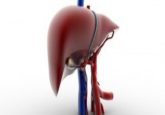DNA methylation as a potential mediator of environmental risks in the development of childhood acute lymphoblastic leukemia

5-year survival rate for childhood acute lymphoblastic leukemia (ALL) has risen to approximately 90%, yet the causal disease pathway is still poorly understood. Evidence suggests multiple ‘hits’ are required for disease progression; an initial genetic abnormality followed by additional secondary ‘hits’. It is plausible that environmental influences may trigger these secondary hits, and with the peak incidence of diagnosis between 2 and 5 years of age, early life exposures are likely to be key. DNA methylation can be modified by many environmental exposures and is dramatically altered in cancers, including childhood ALL. Here we explore the potential that DNA methylation may be involved in the causal pathway toward disease by acting as a mediator between established environmental factors and childhood ALL development.
Click here to view the full article in Epigenomics.



